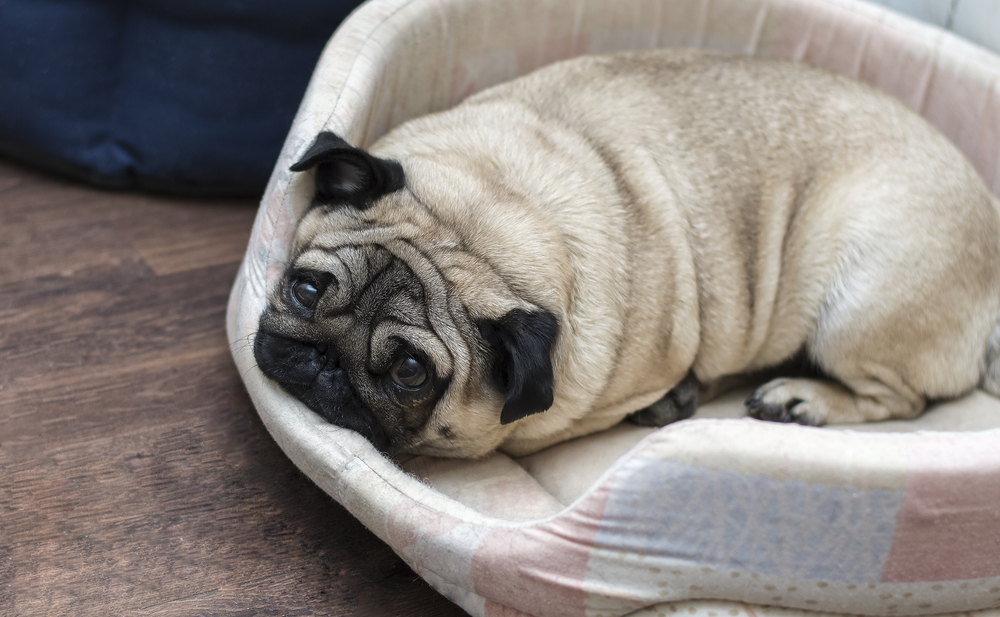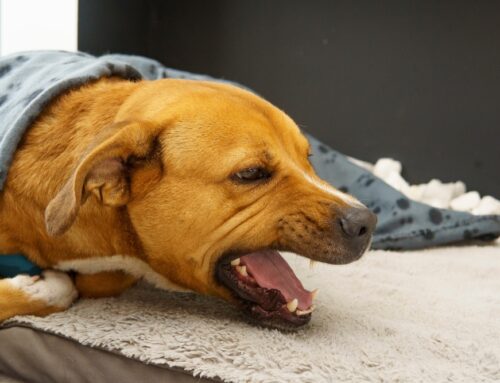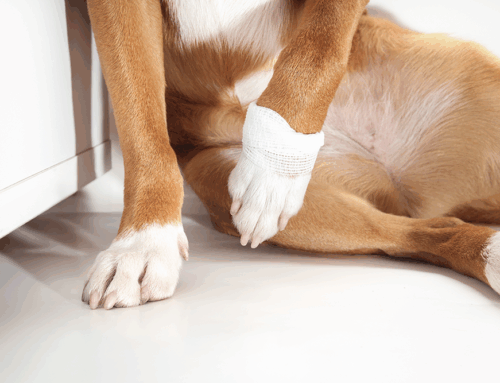The pet obesity epidemic is a serious problem in the United States and around the world. The Association for Pet Obesity Prevention (APOP) 2018 survey estimates that 54% of dogs and 58% of cats in the United States are overweight or obese. Numerous health risks are associated with pet obesity, and studies have shown that an overweight pet’s lifespan can be two-and-a-half years shorter than that of a healthy weight pet. Your pet depends on you for everything—including meals, treats, and exercise—and you are responsible for ensuring they stay healthy and trim. Learn how to help your furry companion stay healthy by reading our Bayview Animal Hospital team’s answers to your most-urgent questions about pet obesity and weight management.
Question: Why does it matter if my pet is a few pounds overweight?
Answer: While a few extra pounds may not be harmful to your health, your pet’s additional weight can greatly affect them. Remember, a few additional pounds can cause your pet to experience serious health problems, including:
- Arthritis — An overweight pet is likely to have more joint inflammation and pressure, which can cause or worsen arthritis.
- Cardiovascular issues — Extra weight puts more stress on the cardiovascular system, increasing your pet’s congestive heart failure and high blood pressure risk.
- Back problems — Because excess weight puts extra pressure on their spinal cord, overweight or obese pets have a higher risk for slipped spinal disks than pets who are a healthy weight.
- Endocrine disorders — Endocrine disorders occur when the thyroid or adrenal glands are not functioning properly, which can lead to health conditions such as a decrease in skin and coat quality, increased or decreased appetite, and behavioral changes.
- Diabetes — With diabetes, an inadequate amount of glucose is transported to the cells, negatively affecting the entire body—especially the liver, kidneys, and eyes—and predisposing your pet to systemic infections.
Q: Is my pet at a healthy weight?
A: Pets come in all shapes, sizes, and breeds, and each pet’s ideal weight range is unique. For example, a 60-pound greyhound’s frame appears vastly different from a 60-pound basset hound’s frame. To help you determine if your pet’s weight is healthy, veterinarians recommend using a combination of your furry companion’s body weight and their body condition score (BCS). You can determine your pet’s score—commonly evaluated on a nine-point scale—by completing a hands-on assessment, and evaluating the fat amount on key areas of their body. Typically, a mid-scale score—four or five—indicates your pet has a healthy body condition. To identify your pet’s body condition score, evaluate your pet’s ribs, waist, and hips by doing the following:
- Ribs — You should be able to feel your pet’s ribs easily by palpating them with flat fingers. If you have to press in the rib cage, or simply cannot feel their ribs, your pet is overweight.
- Waist — When viewing your pet from above, their waist should be visible behind the rib cage, forming an hourglass shape. From the side, you should see an upward slant from the rib cage to the back legs. A sagging waist or swinging stomach indicates that your pet is overweight.
- Hips — Excess fat layers on your pet’s hips, legs, or pelvic bones also indicate that your pet is overweight.
Q: How can I prevent my pet from becoming overweight?

A: Pet weight gain is usually a result of overfeeding and a lack of exercise. Follow these tips to keep your pet at a healthy weight:
- Annual wellness exams — During an annual wellness exam, your pet’s veterinarian will assess your cat’s or dog’s weight, and check for underlying medical issues that could cause weight gain. Unusual weight fluctuations can indicate a metabolic disorder, such as hypothyroidism and Cushing’s disease, and—to better manage their effects—early diagnosis is important.
- Nutritional diet — All pet foods are not created equally, and some do not provide the complete nutritional value necessary to maintain your pet’s healthy metabolism. If you are unsure about the right food for your pet, ask your veterinarian for recommendations.
- Portion control — Most pet food packages list recommended portions based on a pet’s age and size. However, you may need to adjust the amount to accommodate other factors, such as your pet’s breed, health, and lifestyle. You also can use calorie calculators to help determine your pet’s nutritional requirements. Remember, treats should account for no more than 10% of your pet’s daily calorie intake.
- Daily exercise —Pets need regular physical activity—about 20 minutes twice per day—to maintain a healthy weight. The benefits of daily exercise go beyond your pet’s physical health, and can relieve their anxiety and boredom, reducing their likelihood of demonstrating destructive behavior.
- Regular monitoring — By weighing your pet regularly, and evaluating their BCS, you can identify your furry pal’s healthy baseline and better manage their weight over time.
Managing your pet’s weight is a lifelong process, and your veterinarian is always ready to help. If your pet is overweight—at least 10% to 20% heavier than their ideal healthy weight—contact our Bayview Animal Hospital team, and we can customize your furry companion’s weight-loss plan.







Leave A Comment